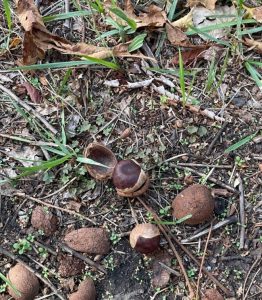Memoir (7) by Professor Joe Watkins, University of Arizona, USA
In September, as I was walking to the office, I happened up a big nut that had fallen on the ground. I thought it was a chestnut and was excitedly looking for more. I didn’t find any more that day, but over the course of the next week or so, I found perhaps 15 total. But I was troubled, because I knew the husks these were in were not the thorny husks I had encountered years ago when I helped school kids gather them. These husks were smooth and easy to open.
I asked someone about them, and they told me they were inedible. I looked on-line (Thanks be to Google) and saw that they were bitter due to compounds that caused medical issues in people unless the offending compounds were removed. In the United States, acorns were a major food source, but the tannin acid in the nuts had to be removed before they could be used. Native peoples would pound the acorns into a sort of mush, and then place that mush in baskets in running water to leach the offending compound.
People of ancient Japan used horse chestnuts during the Jomon period as a food source, and I expect that the nuts were pounded and placed in running water to leach out the things that causes the bitterness. I still have the nuts on a small table in my apartment, and I have been tempted to try to process them for a meal.
Maybe I will, or maybe I won’t. I’ll let you know.

Horse chestnuts and husks. Photo by Joe Watkins.


